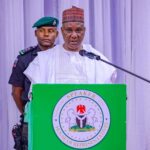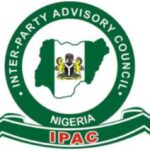Dr Abdulrazaq A. Garba, the Director General of the Nigerian Geological Survey Agency (NGSA), in this interview, speaks on how the country is attracting investors in the mining sector through the production of geological maps, and why private investors are needed for the country to know the true depth of its mineral resources: Excerpt.
What has the agency been doing over the years to identify resources for investors in the mining sector?
The difference between the past 10 years and what we are seeing now is the confidence that investors have to come into the sector. We have been doing a lot for increase in revenue generated by some of the agencies under the Ministry of Mines and Steel Development. While the geological agency is not generating income, but we are big spenders of money. What we are doing is evident in the downstream sector of the mining sector which is manifesting in the number of applications for mining licenses.
Recollect that we made a pronouncement after the NIMEP project that we have high grade lithium in Nigeria, we mentioned Nasarawa and Kwara, after that, so many investors were looking for licensing. That is why we are saying for the mining sector in any country to blossom, the geological survey must be very effective and efficient.
- ECOWAS deadline: Niger shuts air space, places troops on standby
- Tinubu’s cabinet: Oil-producing areas demand Niger Delta affairs portfolio
Searching for minerals is like research which means that you can find something or not. But exploration has several stages which start with identification to several other processes that include geological mapping that shows the rock types of the minerals. Then we can proceed to further investigation like geochemistry, that shows the quantity and availability of the minerals in terms of the chemistry of the element you are looking for. Having identified the location, you need to go beyond the surface where you will apply geophysics, which can now give information on the body or the host to the mineral down below. When the geophysics looks at the body and it is there, the body hosting the mineral will enable us to know the morphology. From there we will do the drilling. So, exploration is in stages and investors rely on this.
Exploration, being an expensive venture, investors always look for confirmatory information beforehand. That is the basis for investors to come into the mining sector.
How do investors get the information you produce?
Most of our products, we provide them in the form of publications, which could either be in maps, bulletins, fliers and so on. Basically, the thematic product we produce is map. In recent times, the rate at which we have been producing maps has increased significantly. Production of maps is one of the fundamental functions of NGSA. Our pioneer directors’ prided themselves on the number of maps they have been able to publish. At this level, we have gone far in production of maps because it is not just geological maps we have produced.
We have produced litostructural and mineralogical, which provides information on mineral types we have in the country, their genesis and condition that controls their formation. Investors need this kind of information because as they are coming into a country, they will want to know the type of minerals and the approach to extract them.
From 1956 to 2003, we have produced 15 to 14 maps, from 2003 to 2013, we have over 80 and between 2013 to 2019, we have about eight while for 2019 and 2023 we have about 50. That shows that a lot is being done in generating geological maps.
At one point in time, we did publish some publications in the Sokoto basin looking at the composition of graphite. In Nigeria, geological areas are categorised as cells and they are 44 but we have done 16, The recent was through the sponsorship of the World Bank, under the National Integrated Mineral Exploration Project (NIMEP), because it cost about N1bn to map a cell.
What is the programme about?
The NIMEP project is one of the key aspects that the federal government has done very well. The project has helped to elucidate the minerals in each part of the country, this is because before then, geological reporting had been too academic and most investors dumped them when they looked at them. However, the NIMEP has tilted our reports towards the industry.
When I came on board, we felt we couldn’t continue this way and the best way was to look at doing things in a way that will be able to attract the right type of investors into the country. In doing that we felt that we should have competent persons driving both the contractor and consultants such that the report will be internationally acceptable.
Though there are complaints that the NIMEP did not complete the work on identifying the whole minerals we have, but we should look at the deliverables. The investing public accepted what was presented because of the form of reporting and data available in those areas we covered. It was fantastic, investors are not interested in only what you have on the surface, you must have information on the subsurface too, that is why we are saying that the next phase of the NIMEP should focus on the area identified and generate more information on the subsurface.
Any investor you are bringing into the country, once you don’t have any information about the subsurface, they might not take what you are talking about seriously.
Going forward, our plan is to take the NGSA to the highest level and in doing this, we have to reemphasize those three components of geoscience data, generation for national development and infrastructural development. In the future, we are looking forward to having a geological survey that meets all the key performance indicators required in the sector and making sure that Nigeria brings the right type of investors into the country.
How are you collaborating with other agencies to drive increased activity in the mining sector?
We are collaborating with every agency that is of like mind, this includes the National Steel and Raw Material Exploration Agency and Metallurgical Development Centre in Jos, the Mining and Cadastral Office. We have been able to reach out to them whenever we need to test any mineral. We also have the privilege to also send some of the minerals outside the country, this gives us the opportunity to standardise our testing and make it to be based on international standards.
Our collaboration is not limited to the Ministry. Recently, we concluded research called, geochronology and age dates. That aspect has to do with the age dating of rocks and minerals in Nigeria. We have succeeded in collaboration with Curtin University in Western Australia.
We have started some collaboration on areas of geochemical mapping. The idea behind this is that the mapping will not be just for exploration but for agriculture, environment and land use planning. For land use planning, it will serve as an advisory to detect what land can be used for. For instance, if there is a potential for mineralisation in a particular area, there is no point if you put an estate there, this will tell you what potential land can be used for, whether for farming or mining.
What are the challenges facing the sector?
Funding is the major issue. Sending mineral samples outside the country for testing costs us millions as it is dollar-denominated and we don’t have a budget for that. As I mentioned earlier, doing a robust exploration requires lots of money to engage in drilling to identify components of the minerals under the earth’s surface. Our budget from 2016 to 2021 is below $10 per square kilometer. In 2017 it was below what is required because you need from $10 to $100 per square kilometer to be within the range. If you want to do advanced exploration, it starts from $50,000 to $10m.
Also, the security situation in the country is limiting the places we can go to get samples of minerals in some areas.
How can Nigeria get bankable geological data?
The government can’t do it because a detailed exploration is for the private sector spending, what the government can do is the mineral assessment and identification. If that is done, those who give the license to mine the areas can quickly develop it as they are not starting from scratch. Thus, the government can’t provide bankable information to be able to use. For instance, the lead sample we sent outside for a metallurgical test, we spent more than N1m per sample and that is the test. It is the private sector that can drive the mining sector, but the government can’t do much.

 Join Daily Trust WhatsApp Community For Quick Access To News and Happenings Around You.
Join Daily Trust WhatsApp Community For Quick Access To News and Happenings Around You.


